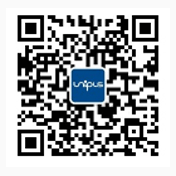面对同一主题,不同人演讲会出现截然不同的效果。别人家的演讲让人心服口服,而有的演讲……还有很大的进步空间。
同样都是演讲,差别咋就那么大呢?是什么让别人家的演讲更有说服力?
答案就是论证材料!
能否娴熟运用论证材料是演讲成败的分水岭。
合适的论证材料可以帮助充分阐述、论证演讲的主要观点,充实演讲主体,激发听众的情绪和同理心,给演讲增加可信度。
论证材料(supporting materials)的分类有很多种,今天小U就来分享使用频率较高、普适性较强的三种基本类型:
① 事例(examples)
② 数据(statistics)
③ 证言(testimony)
事例(Examples)
事例被许多有经验的演讲者视为“演说的生命”,可以帮助演讲者建立前提和定义。不是所有人都愿意直接接受一个观点,但几乎没有人能够拒绝听一个好故事,听众在感受故事的过程中可能会产生同理心,理解和接受演讲者的观点便是水到渠成的事。
简要事例(brief example)
简要事例,也叫特定事例,指以顺便提及的方式阐明观点。演讲时也可使用一连串的简要事例,给听众营造更深刻的印象。
扩展事例(extended example)
扩展事例也叫做叙事、例证或轶事。通过形象生动地讲述真实故事,将听众带入演讲情景中。
假设事例(hypothetical example)
有时,演讲时会使用假设事例,即描述的是想象或虚构场景的事例。通常这类事例以简要故事的形式出现,并试图说明某个普遍原理。
范例:
I am one of those classic academic types who devote every moment to my studies. On weekends, I'm the kind of student who gets kicked out of the library at closing time on a Friday night, and then locks himself in the lab on Saturdays and Sundays. College for me used to be an exhausting, extended, lengthy journey full of ambiguities. I kept wondering, "Why am I here? Why does any of this matter? And where am I going?"
By Zang Yingjie (2016 FLTRP Cup)
分析:演讲者在开篇使用了扩展事例,详细讲述了自己因独自埋头学习而感觉校园生活枯燥疲惫,将听众带入演讲情景中,从而引起情感共鸣,为后面详述其主题“Communication Is Wonderful”作了铺垫。
数据(Statistics)
数据常代表客观事实,听众一般都会相信其真实性。19世纪物理学家凯文勋爵曾说:“当你能够衡量某个事物,并用数据表达出来,那说明你真的了解此事。但假若你不能够衡量它,不能用数据说明,那么你的知识……只能说储备不足,有所欠缺。”可见,当数据得以正确使用时,便成了阐明和支持论点的有力武器。
范例:
“杂交水稻之父”袁隆平教授在其演讲中曾这样使用统计数据:
It is expected that 60% more rice should be produced in 2030 than that in 1995. Currently, 1 hectare for rice production provides food for 27 people. By 2050, 1 hectare will have to support 43 people. If 50% of the conventional rice is replaced by hybrid rice, and estimating on a 2 t/ha yield advantage of hybrid rice, it is estimated that the total rice production in the world will be increased by another 150 million tons, which can feed 400 million more people each year.
分析:不需要过多修饰,袁隆平教授仅凭这些数据和分析就让普通听众最快最直接地意识到了粮食问题的紧迫性。
数据运用小贴士:
使用有代表性的数据。确保出示的数据对于所衡量的对象具有足够的代表性。
说明数据来源。不要说“数据显示”或“我收集的数据表明”,而要告诉听众数据来源。
采用来源可靠的数据。作为演讲者,要注意避免使用有失公允的数据。因为数据的诠释方式和具体用途多种多样,所以数据采集必须可靠、中立。
将复杂数据化零取整。除非必须提供确切的数字,多数时候应将数据化零取整,以便听众消化。如:鄱阳湖表面积为3585平方千米→鄱阳湖表面积接近3600平方千米。
解释数据。数据本身不会说话,需要解释才能让观众明白。要开动脑筋,富有创意地解释数据,将数据与听众联系起来。
证言(Testimony)
证言,即引证他人的观点。一般有专家证言(expert testimony)和当事人证言(peer testimony)两种。
专家证言:在某一领域权威专家的证言。
当事人证言:对某话题有亲身经历或独特见解的普通人的证言。
演讲者可以通过引用或者转述他人证言来充实主要观点,增强演讲的可信度。下面是一组未使用和使用证言的对比,一起来感受下吧。
未使用证言:
Communication helps remove the stereotype of nationality.
使用证言:
That was a summer in Thailand, where I met this girl. And she asked me: "Where are you from?" I said that: "Isn't it obvious that I am from China?" She laughed: "No, nowadays you can't tell where these people come from by their faces. Asian-looking persons could be citizens of any country." Because most of us are so used to deciding where these people come from by their appearances, and ignoring the fact that Asian-looking persons could be from anywhere and we are too lazy to actually have a good communication with others. Communication could help remove the stereotype of nationality.
在运用证言时,可直接引述,也可以采用改述,即用自己的话将证言进行概括或重新表达。
当证言足够简洁,相比自己的话更能表情达意,而且言语犀利、睿智巧妙、更具震撼力时,直接引述是首选。当证言措辞过于含糊繁冗,或证言过长(超过两至三句话),优先选择改述。引述过长,观众容易开小差,会影响演讲的流畅性。








 北京市西三环北路19号外研社大厦3101室
北京市西三环北路19号外研社大厦3101室


